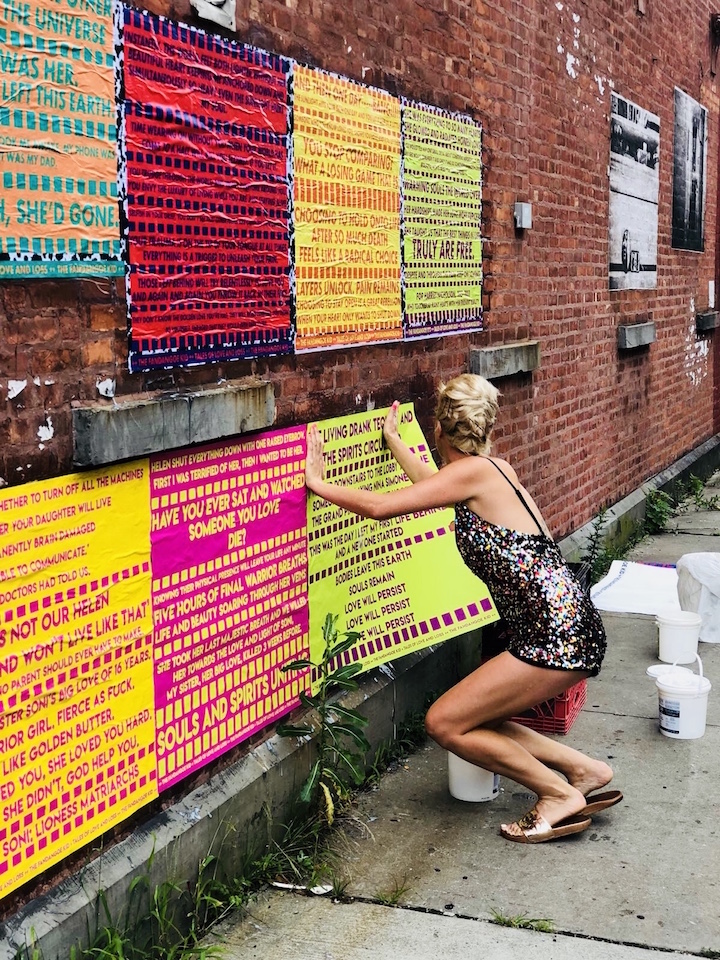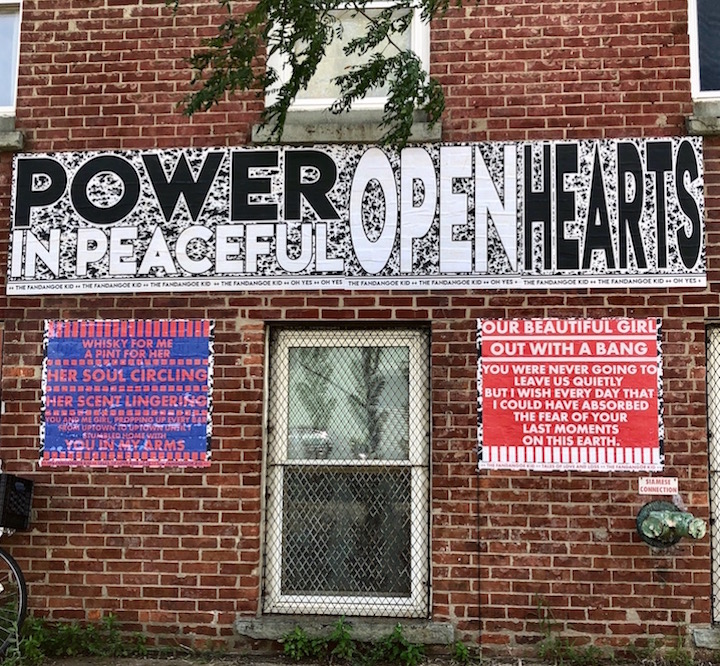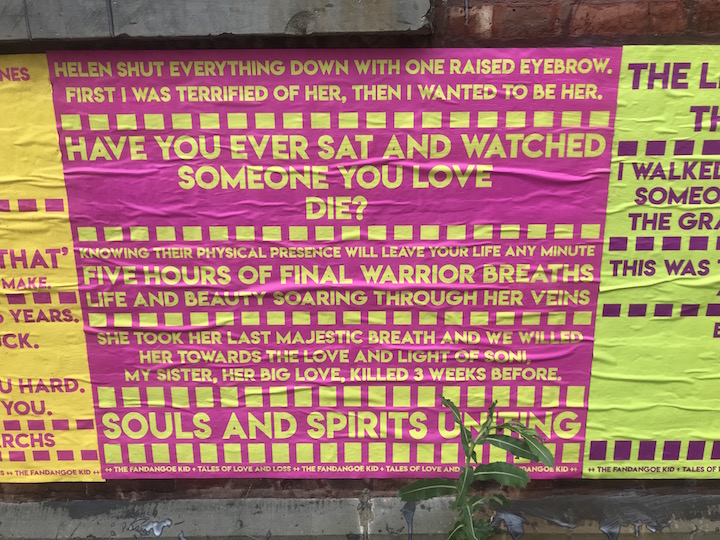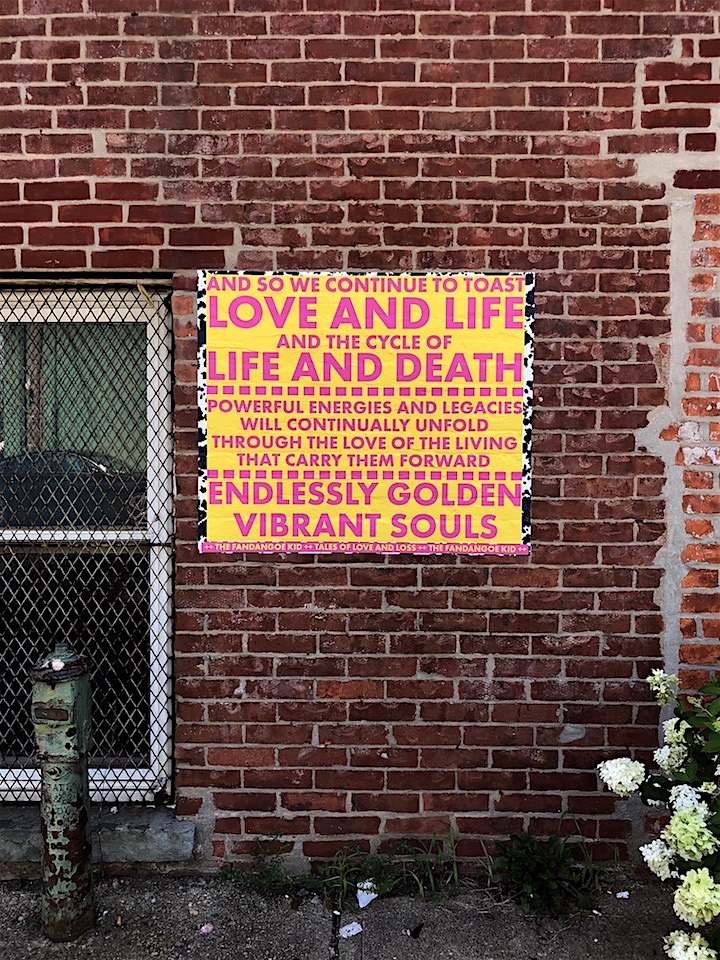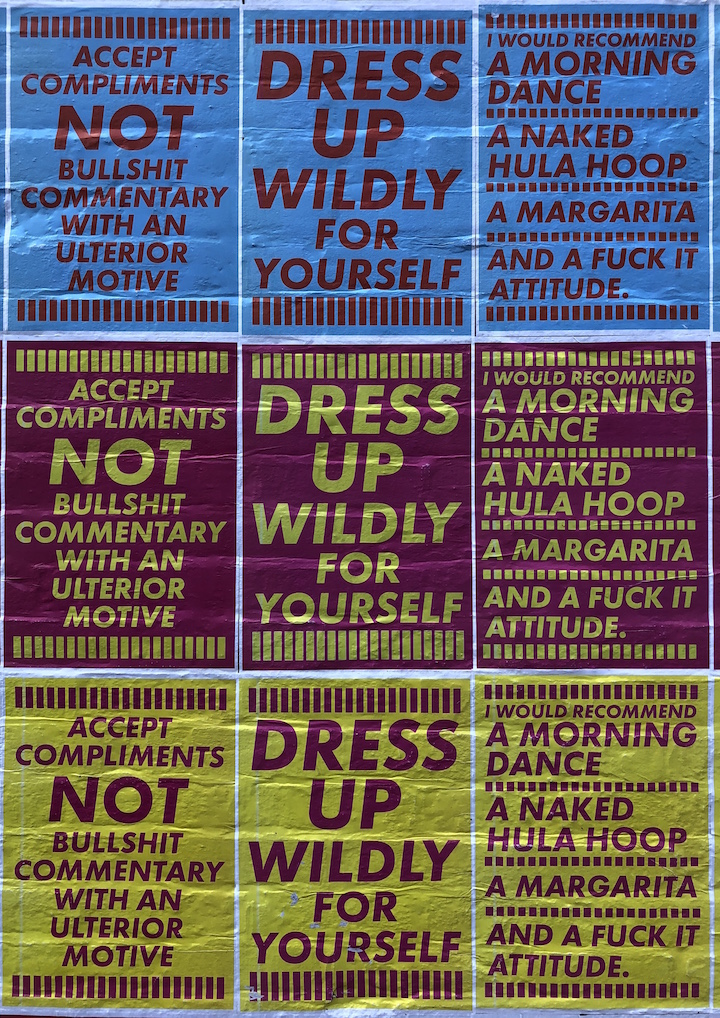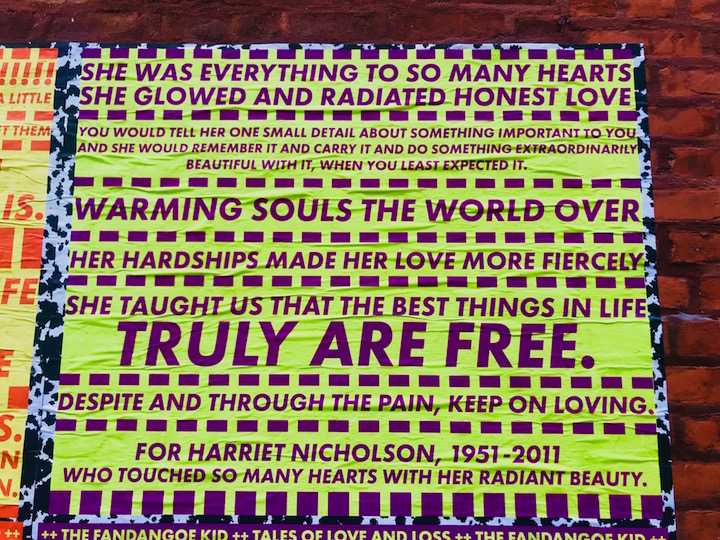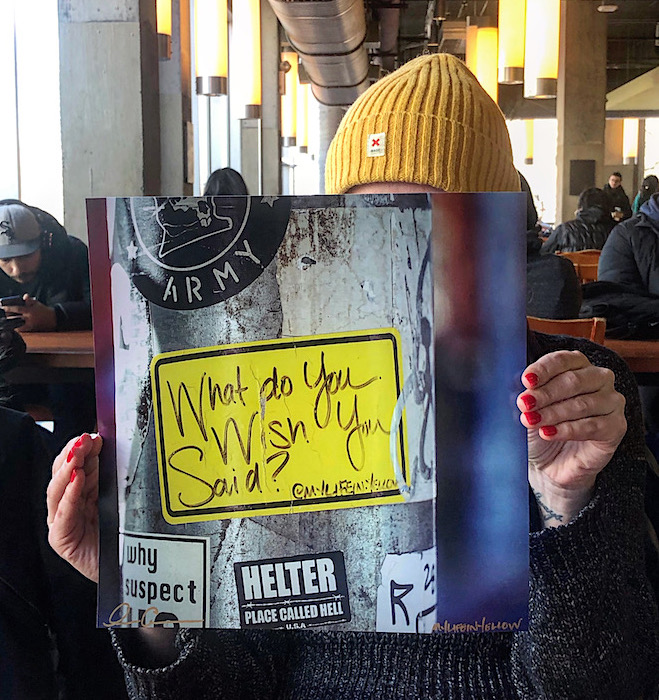
Curious about the face behind the poetic, bright yellow stickers that have increasingly become part of NYC’s visual landscape, I was delighted to meet and speak to the beguiling My Life in Yellow.
We street art aficionados know you as My Life In Yellow. When was My Life in Yellow born?
It was born ten years ago as the name of my blog when I first moved to New York.
Why Yellow?
I was always drawn to the color yellow. It was my grandmother’s favorite color. And when I was in college, my room was blue, while the room next to mine was yellow. The girl who dormed there was always happy, had yellow accessories and always wore the color yellow. The yellow room was so much more inviting and cheerful than mine that I soon began to surround myself with the color yellow.
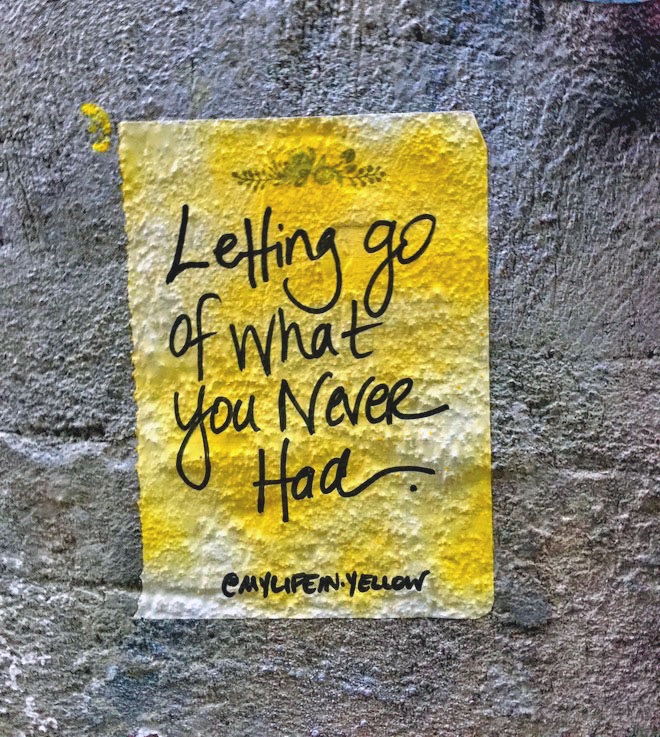
When did you start slapping your stickers up on the street and why?
Several years ago, I met Thomas OKOK Gunnarsson aka TagsAndThrows. He introduced me to the street art/graffiti world. We walked around the city together as he photographed graffiti. One year later his friend, AllYouSeeIsCrimeInTheCity, a street art photographer based in Sweden, came on a visit to New York City. She gave me my first sticker and encouraged me to write on it. I was going through a difficult break-up at the time, so I wrote “Tell Him How You Feel” on a postal sticker. She slapped it for me in Soho.
What inspired you to keep making stickers and getting them up?
I started getting really positive feedback. And it was a kind of therapy for me as I was going through difficult times. People started to reach out and say things like, “Now I know I’m not alone” and “Me too, omg — I feel this way.” I started to realize how similar we all are in our dark thoughts, what we don’t say out loud. That was the moment I felt, “This is what I’m supposed to be doing.”
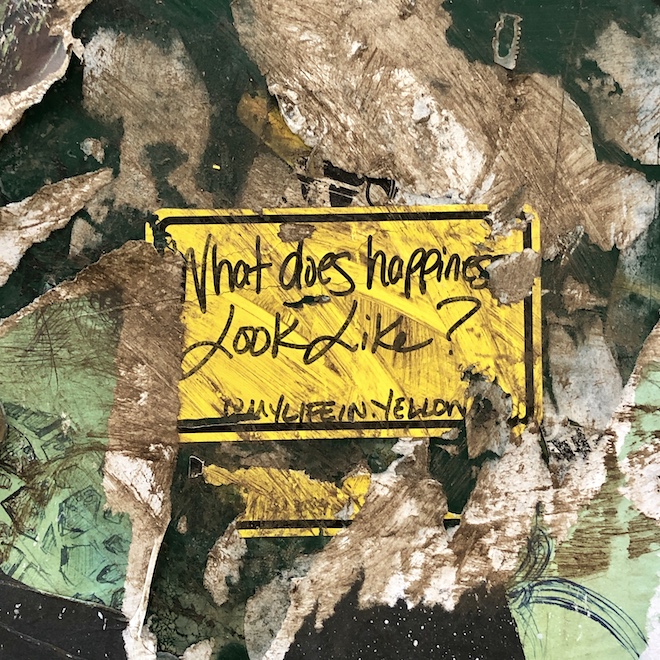
Have you any particularly memorable street art experiences?
I spontaneously slapped a sticker on a bridge in Berlin. The sticker read. “Tell Him How You Feel.” A girl nearby noticed it and commented, “A lot of people jump off that bridge.” I hadn’t thought of that! Another time I slapped a sticker on the Manhattan Bridge that said, “It’ll Be Ok.” I did not realize until afterwards that I had slapped it on a suicide/help call box!
Who are some of your favorite sticker artists?
MQ and Token. I appreciate how consistent they are. I see their stickers everywhere!
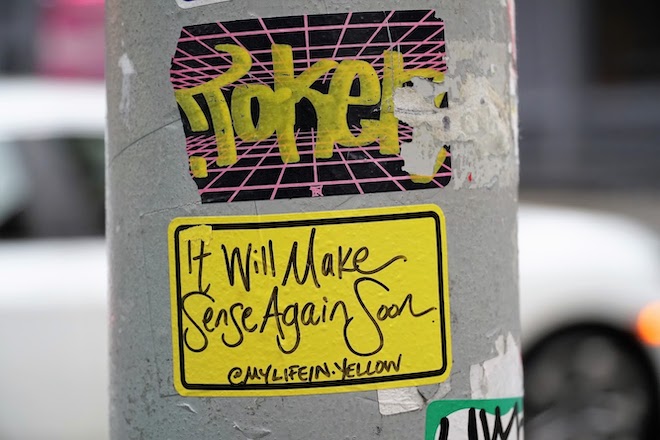
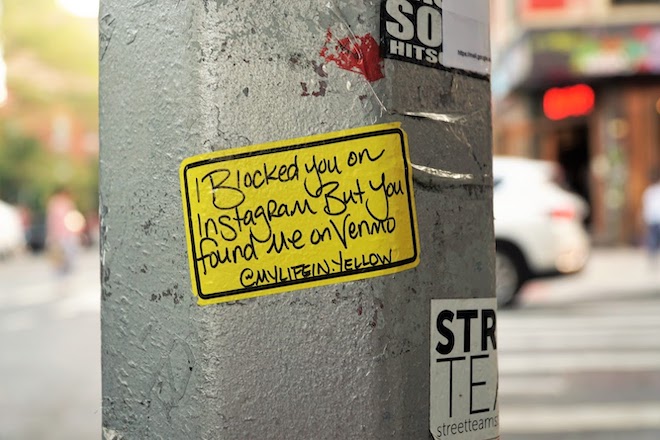
Are you generally satisfied with your work?
Yes, I slap and I walk. And then when I revisit it, I feel like I’m visiting my child.
How has your street art evolved in the course of these these past five years?
Its intent and tone have stayed the same, but I also wheatpaste now. And I’ve painted directly onto walls–by myself and in collaboration with other artists.
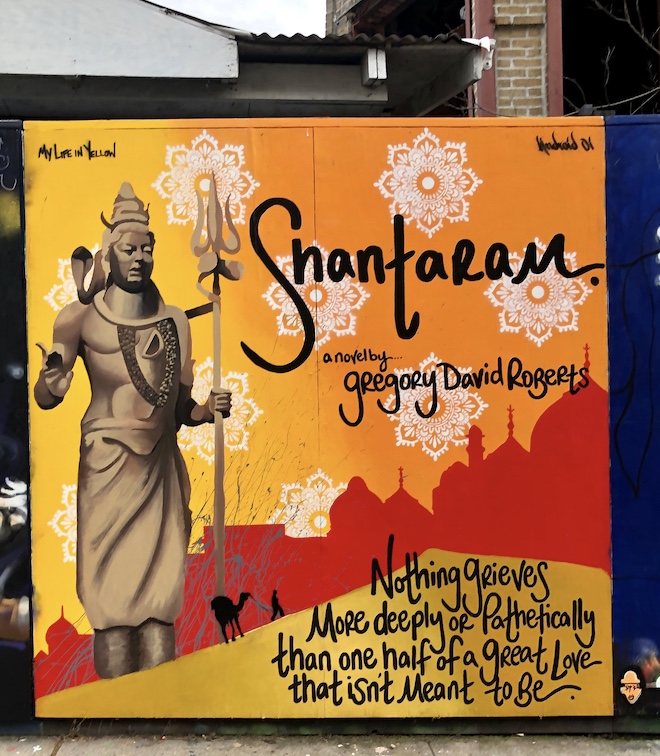
What is your favorite piece that you’ve created?
That’s a tough one! “Once my lover, now my poem.” I find myself writing it a lot.
How long do you usually spend on each sticker?
It comes in spurts. I often write a whole bunch at one time. Sometimes it’s just spontaneous.
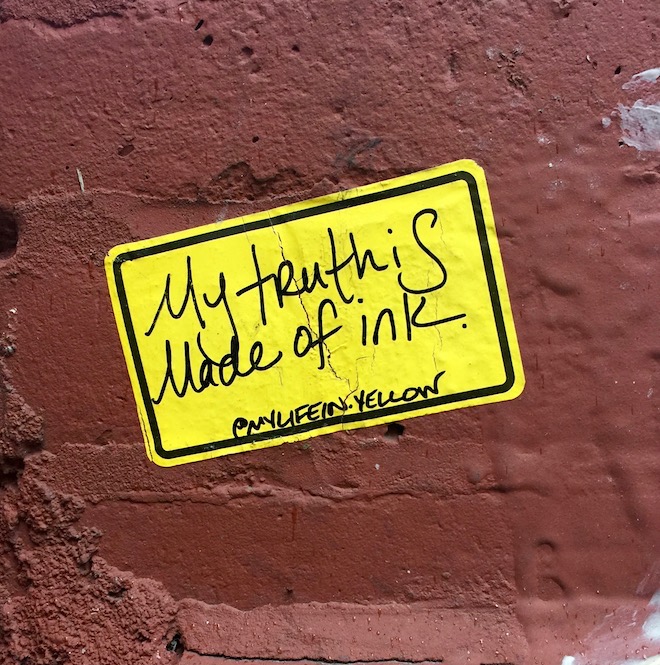
What percentage of your time is devoted to art?
Don’t tell my boss, but I think about it all the time.
Have you exhibited your work?
Yes! I’ve exhibited in several local spaces. When I first met Sac Six a few years back. he encouraged me get up on canvas. I still make little canvases — that look like my stickers — that I show and sell in exhibitions. I’ve also created works that don’t resemble my stickers at all. I was recently featured in the Phoenix Rising exhibit at the Gala on 129 Allen Street, where one of my pieces sold.
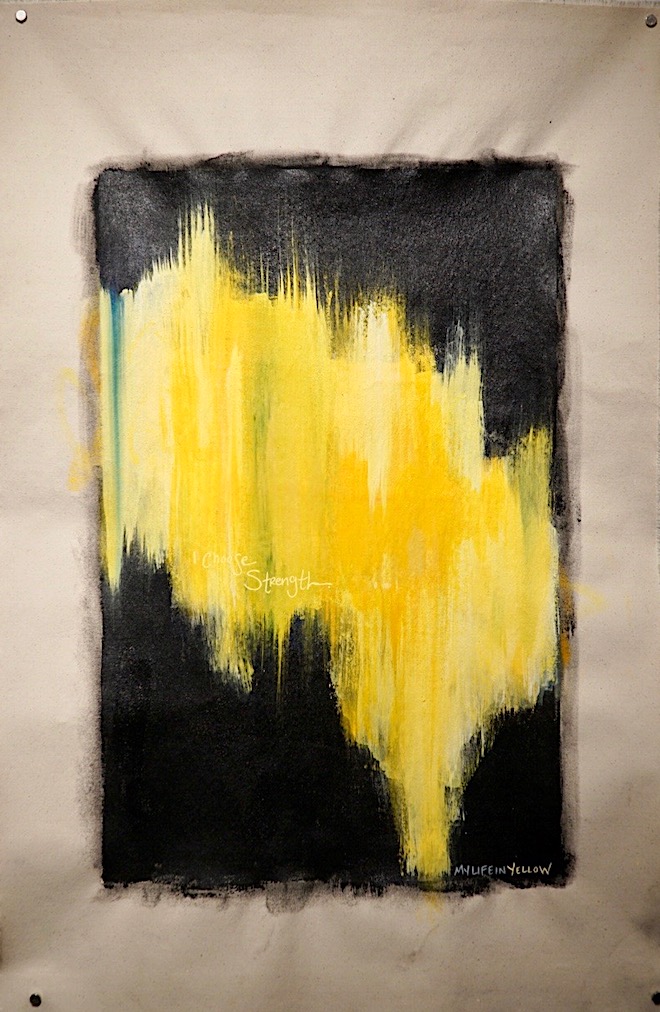
Where else have your stickers traveled, besides the streets here in NYC?
London, Paris, Trinidad, Sweden, Berlin, LA, Miami. All placers I’ve been to. I prefer to slap stickers myself. There’s something special about it. It’s nice when people offer to slap my stickers up in other places, but I don’t give them out.
You’ve also painted in sanctioned public projects. Do you prefer working legally or illegally?
There’s something magical about pasting stickers up. I like its randomness, but I also enjoy working legally.
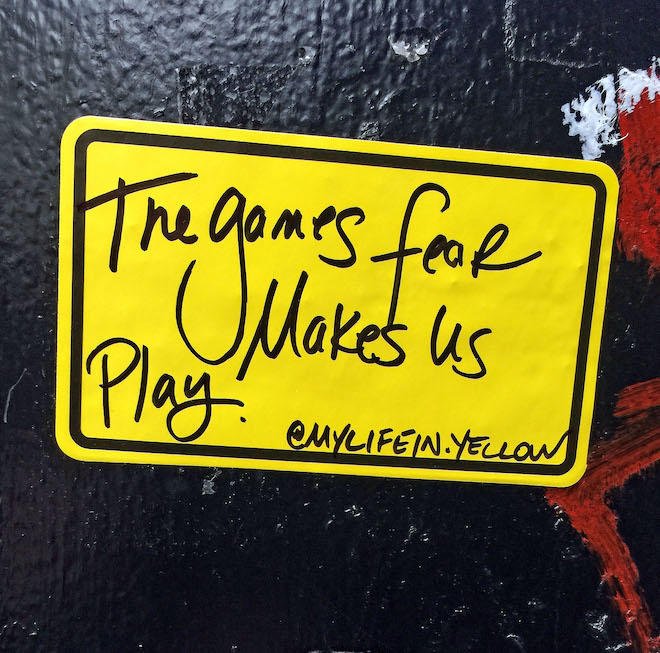
How has your family responded to your work on the streets?
They’re entertained by it. My father exhibits his photography. My grandfather was an artist.
Did you ever study art in a formal setting?
No, I’m self taught. I have a BA in business and a degree in Fashion Design from Parsons.
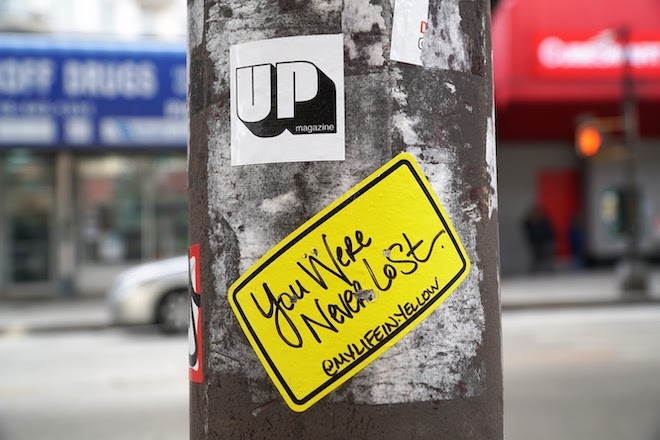
What are some of your other interests?
Spoken word poetry. I’ve performed in various venues. And I recently curated an event to help raise money for the JED Foundation.
Where are you headed? Any recent projects?
I recently collaborated with street art photographer Ana Candelaria. Ana’s photos always make me so happy. I love how she captures my stickers out in the wild: weather-faded, slapped-over and scratched-off. I love her documentation of their deterioration. Her photos really speak to me and I’m looking forward to many more collaborations with Ana. I‘ve also just released a chapbook of my poetry, Despite it all. Where am I headed? I’d like to travel the world, get on stages with my poetry, paint more murals and conduct workshops on the power of words.
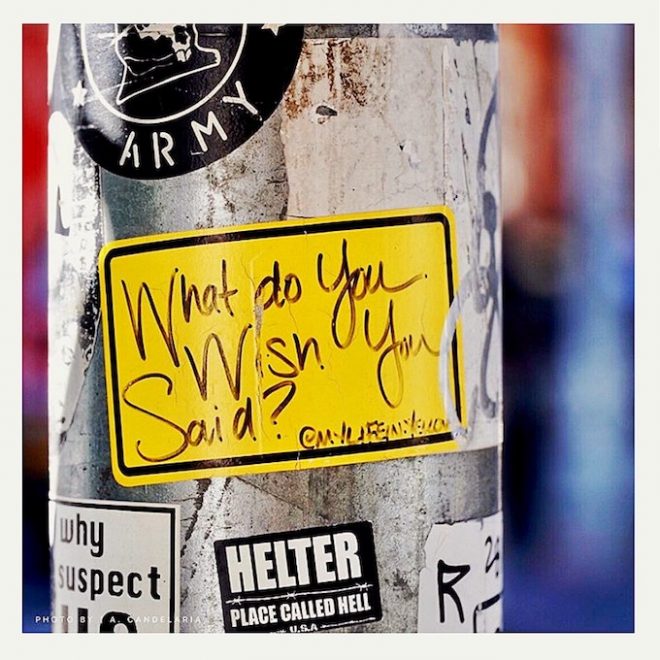
That all sounds great! What do you see as the artist’s role in society?
To help people feel something.
Note: You can purchase My Life In Yellow‘s recently-released poetry book together with Ana Candelaria‘s photograph of her iconic sticker as a PHOTO PRINT & CHAPBOOK BUNDLE PRE-SALE here.
Interview conducted and edited for brevity by Lois Stavsky with Ana Candelaria
Photo credits: 1 (featuring Ana’s photograph) – 3, 6, (featuring My Life In Yellow‘ s collaboration with Androi 0i for Underhill Walls 7 & 9 Lois Stavsky; 4, 5, 8, 10 & 11 Ana Candelaria
{ 0 comments }
